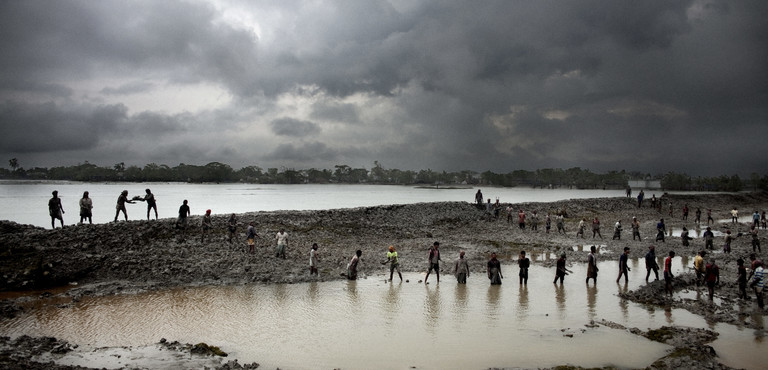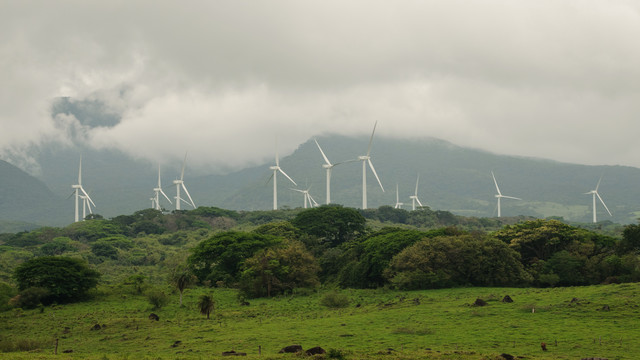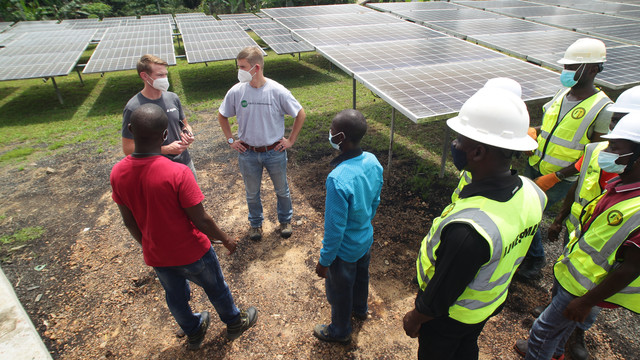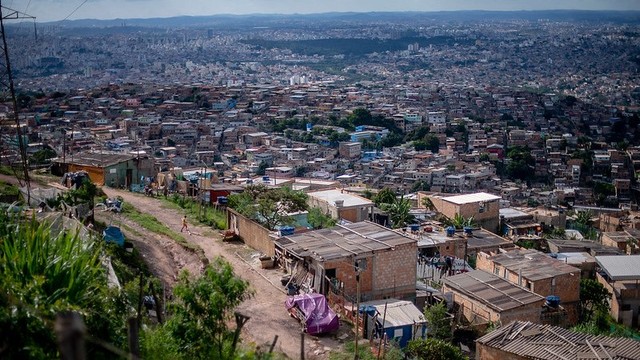Does "leave no-one behind" risk too narrow a focus?
"Leave no-one behind" has become a key phrase in interpreting the Sustainable Development Goals, but we should think carefully about what it implies.


Building an embankment in the Bay of Bengal. Bangladesh has been forced to learn how to cope with the realities of climate change (Photo: Espen Rasmussen/PANOS)
What does the phrase 'leave no-one behind' mean to you? The first example that popped into my head when I heard it used was the time when UK Prime Minister David Cameron and his wife inadvertently left their young daughter in a pub. It seems they had such a large entourage that both assumed she was with the other.
I don't think that's exactly the image the High Level Panel on post-2015 Goals – co-chaired by Cameron – had in mind when they adopted this phrase, now included in the preamble to the Sustainable Development Goals (SDGs).
But it's not the only connotation. 'Leave no-one behind' is also a military term, a commitment to avoid any soldiers falling into enemy hands.
I also have some misgivings about what 'leaving no-one behind' actually means in a development context. It obliges us to accept that there are 'leaders' and 'the rest'; that all are (or should be) heading the same way; that it's possible to bring everyone along on this shared journey.
Perhaps this is an over-literal interpretation, but phrases like this have real power to shape policy so it's important to pick them apart and think carefully about what they imply.
Building on the MDG agenda
Since the SDGs were adopted in September 2015, 'leaving no-one behind' has become shorthand for carrying forward the core development agenda set by the Millennium Development Goals (MDGs), part of a narrative that talks about 'finishing the job' and 'getting to zero'.
The MDGs were presented as a means to assess the effectiveness of the development system, providing evidence that Official Development Assistance (ODA) was achieving impact. If the new goals don't enable effective prioritisation, the thinking seems to be that a 'leave no-one behind' approach will allow us to pick from the menu of goals and targets to create a more focused approach.
All of this makes sense if you are concerned that the complex sustainability framework dilutes key aspects of an agreed set of development priorities, but rather less sense from the perspective of a middle income small island state, for example, which has little extreme poverty and deprivation but still faces wide ranging challenges.
It's also not a particularly compelling agenda for a company interested in tracking its social, environmental and economic performance.
What's different about the SDGs?
The SDGs appeal because they differ from the MDGs in three vital respects:
- First, they have much greater legitimacy. The SDGs were negotiated by all governments and represent a collective framework for action (despite occasional internal contradictions mainly arising from the compromises reached in the negotiating process). The MDGs were famously stitched together by a small cabal in the higher levels of the UN Secretariat, and drew heavily on the OECD Development Assistance Committee's International Development Targets. Low and middle income countries had next to no input.
- Secondly, the SDGs are designed to be relevant for all countries and all people. There is a strong emphasis on dealing with extreme poverty and exclusion, but within a broader context which also recognises the harmful impacts of high levels of inequality between and within countries. And of course the SDGs add a new and integrated focus on environmental change. These present major challenges for all countries, and many of these challenges will require cooperation between states.
- Thirdly, the SDGs chart a process of transition from current challenges towards greater sustainability and equity for all. The goals do not constitute a 'road map' but present a direction of travel for the next 15 years. Determining how best to get there is now on the agenda, and leadership will come from different countries and actors than for the MDGs.
Which brings us back to 'leave no-one behind'. In the context of this shared agenda, this concept could be understood as representing a shared challenge to achieve rapid change that provides strong collective benefits across the world.
Winners and losers
There are clearly winners and losers in this transformation. Those at risk of being left behind will be countries and companies locked into obsolete and inefficient energy systems; states and regions which have difficulty in securing adequate food and water; people forced to migrate to find work, or to flee from ecosystem shocks and failures.
Solutions will come from diverse sources. A key challenge for decision-makers is to get much better at learning from a broader spectrum of experience. Learning and capacity development in this context is definitely not one-way – developing countries have more expertise on some of these issues than rich nations.
IIED senior fellow Dr Saleemul Huq gave a series of lectures in the United States in the aftermath of Hurricane Sandy contrasting preparedness for major storms and flooding in Dhaka with the New York response to the hurricane. Dhaka is well placed to help much richer cities deal with the realities of adapting to rapid and unpredictable change.
While some may struggle to embrace this new approach, the challenges that we face mean that business as usual will not deliver. We must recognise the need for transformation – in the way that we do things at home, as well as in other countries.
Tom Bigg (tom.bigg@iied.org) is head of IIED's Strategy and Learning Group.



